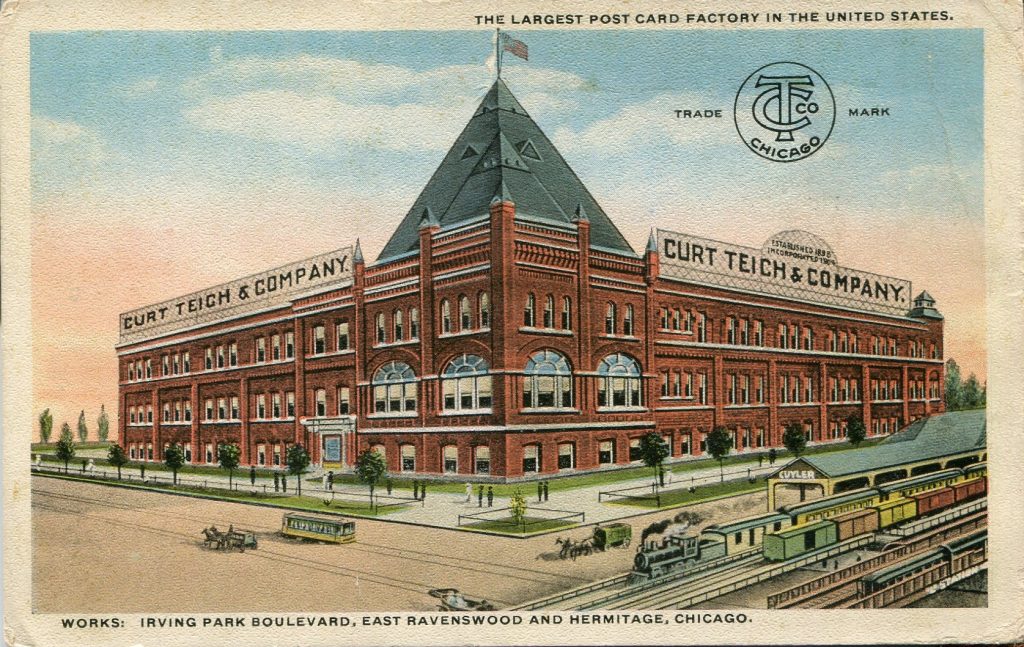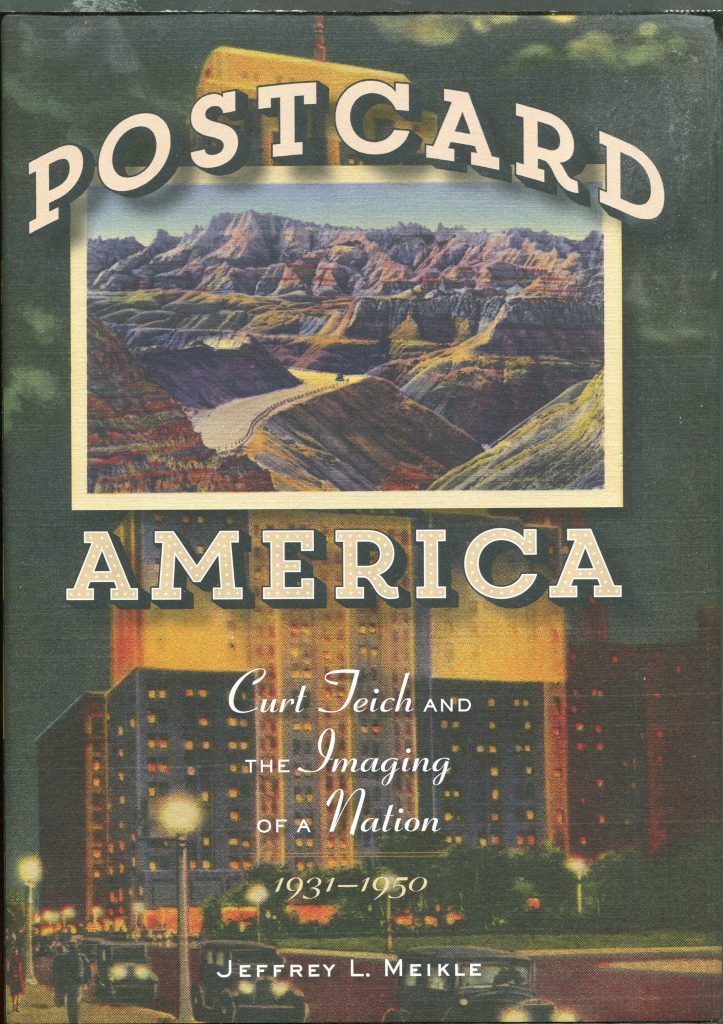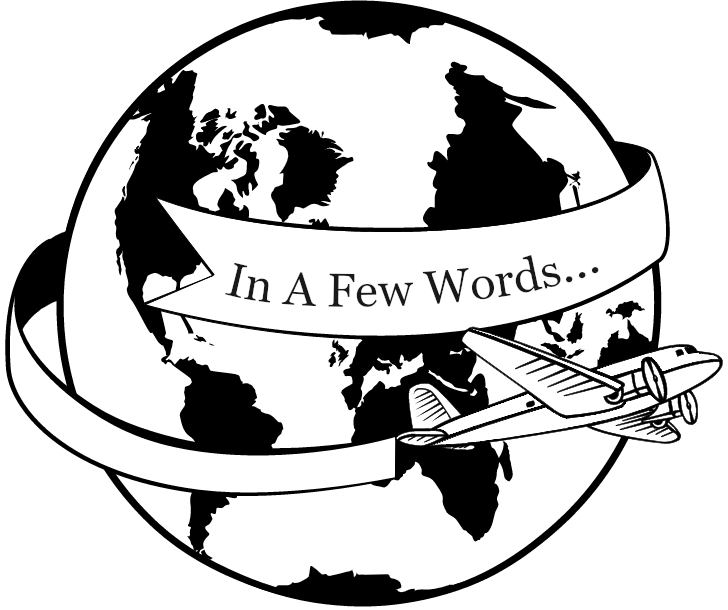
Curt Teich was born in Germany on March 23, 1877. He came to the United States in 1893, settled in Chicago, founded Curt Teich & Company in 1898, married Anna Niether in 1899, and had five children. Made millions of dollars making and selling postcards, retired, moved to Bellaire, Florida, and died on January 12, 1974 at age 96.
All this is well documented in copious detail in history books, newspapers, public records, and diaries.
There is little opportunity that we could present you with anything new about this titan of the postcard world: Curt Otto Teich.
The question we have asked throughout this Postcard History series – “Where was it made?” – can go without a definitive answer this time, because anyone who has collected cards for more than a week, knows that Curt Teich Company was in Chicago.

The Chicago Tribune of Wednesday, January 16, 1974, ran the following death notice:
TEICH
Curt Teich Sr., 96, late of 1000 N. Gulf Blvd., Bellair Shores, Fla., beloved husband of the late Anna; dear father of Curt Teich, Jr., Louise Chmelik and Ralph D. Teich, all of Lake Forest, Ill., also the late Walter Teich of Morehead City, N.C. and Lawrence Teich; grandfather of five. Founded Curt Teich & Co.,in 1898.
Most of us know about the family’s donation in 1978 of the corporate archive to the Lake County Discovery Museum in rural northwest Illinois. One additional fact can be added to the donation story. In 2016, the entire Teich collection, along with several ancillary collections moved to the Newberry Library in Chicago. The Newberry is an independent research library, specializing in the humanities and located on Washington Square in Chicago, Illinois. It has been free and open to the public since 1887.
For those who want to know more, there is Postcard Americaby Jeffrey L. Meikle. This fabulous volume chronicles Curt Teich and the Imaging of a Nation, 1931-1950. It is far from a complete history, but within its 500+ pages are hundred of stories illustrated by Teich’s linen postcards. This title is currently available on Amazon.com and in fine bookstores. It comes highly recommended:
“Postcard America is a seminal contribution to our understanding not only about the linen postcard but also about a graphic style that once visually captured and captivated America.” (Journal of Cultural Geography 2016-10-01).
“Postcard America is an exemplary work in the broad field of visual cultural studies and one that I recommend with great enthusiasm. Jeffrey Meikle’s commentaries on these postcards are a tour de force, the work of a mature scholar with the necessary mastery of diverse disciplines—technology, social history, business history, aesthetic history, and geography. Really extraordinary and fascinating to read.” (Miles Orvell, Professor of English and American Studies, Temple University.)
“A wonderfully presented, provocative, and attractive book. The author’s description of Curt Teich’s life and work, which includes a detailed account of both the artistic and the business end of his operation, is likely to be the last word on this key American image-maker for many years to come.” (Eric Sandweiss, Professor of History, Indiana University.)

From the Great Depression through the early postwar years, any postcard sent in America was more than likely a “linen” card. Colorized in vivid, often exaggerated hues and printed on card stock embossed with a linen-like texture, linen postcards celebrated the American scene with views of majestic landscapes, modern cityscapes, roadside attractions, and other notable features. These colorful images portrayed the United States as shimmering with promise, quite unlike the black-and-white worlds of documentary photography or Life magazine. Linen postcards were enormously popular, with close to a billion printed and sold.
Postcard America offers the first comprehensive study of these cards and their cultural significance. Drawing on the production files of Curt Teich & Co. of Chicago, the originator of linen postcards, Jeffrey L. Meikle reveals how photographic views were transformed into colorized postcard images, often by means of manipulation—adding and deleting details or collaging bits and pieces from several photos. He presents two extensive portfolios of postcards—landscapes and cityscapes—that comprise a representative iconography of linen postcard views. For each image, Meikle explains the postcard’s subject, describes aspects of its production, and places it in social and cultural contexts. In the concluding chapter, he shifts from historical interpretation to a contemporary viewpoint, considering nostalgia as a motive for collectors and others who are fascinated today by these striking images.

One ting I appreciate about Teich cards is that they are dated, although you need to know how to decipher the code. For example, #1A1 indicates the card was the first produced in 1931, with the “A” indicating the decade (“B” represents the 1940’s, “C” the fifties, etc.), the first “1” corresponding to the last numeral in the year, and the second “1” denoting the card was the first issued that year. More here: https://www.flickr.com/groups/657855@N23/discuss/72157603905146722/